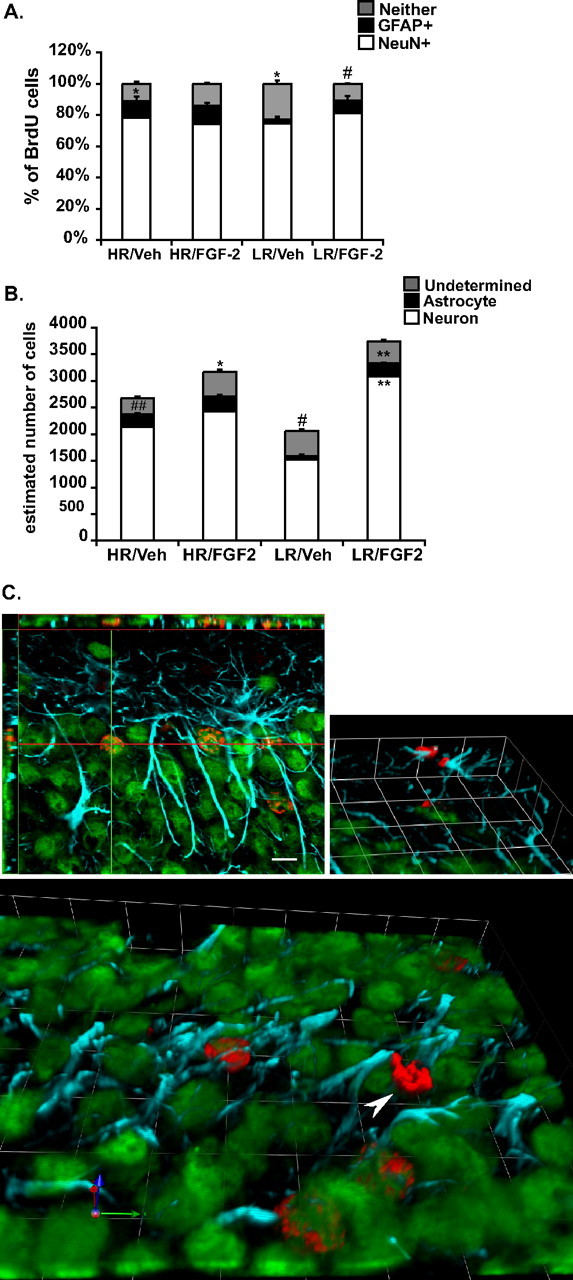Figure 6.

Effects of chronic FGF2 treatment on cell differentiation of adult-born cells in the hippocampus of HR and LR animals. A, Under vehicle conditions, HRs show a greater percentage of astrocyte differentiation relative to LRs, whereas LR animals show a greater percentage of undifferentiated cells. Chronic treatment with FGF2 disrupts such differences in cell differentiation between both phenotypic groups as FGF2 treatment selectively decreases the percentage of undifferentiated cells in LRs. *p < 0.05, # p < 0.0001. B, Under vehicle conditions, HRs show a higher proportion of newly generated astrocytes (BrdU+, GFAP+ cells) relative to LRs, which show a higher population of undetermined cells (BrdU+, GFAP−, NeuN−). Differential effects of FGF2 on BrdU cell survival in LRs significantly increases the proportion of newly generated neurons (BrdU+, NeuN+ cells) and astrocytes (BrdU+, GFAP+ cells). # p < 0.01, ## p < 0.0001, *p < 0.01, **p < 0.0001. Data are presented as mean ± SEM from ANOVA comparisons with Fisher's post hoc test comparisons (n = 5 per group). C, Representative confocal images of BrdU/NeuN- and BrdU/GFAP-colabeled cells and an undifferentiated BrdU-labeled cell; red labeling are BrdU-positive cells, blue labeling are GFAP-positive cells, and green are NeuN-positive cells. Top left, A BrdU-labeled cell colabeled with NeuN confirmed in the x, y/x, z axis (scale bar, 10 μm). Top right, Three-dimensional image of a pair BrdU cells colabeled with GFAP. Bottom, A three-dimensional image of multiple BrdU+ cells colabeled with NeuN. Arrowhead points to BrdU undifferentiated cell. Units in three-dimensional images; each square side panel of the three-dimensional image is 10 μm.
